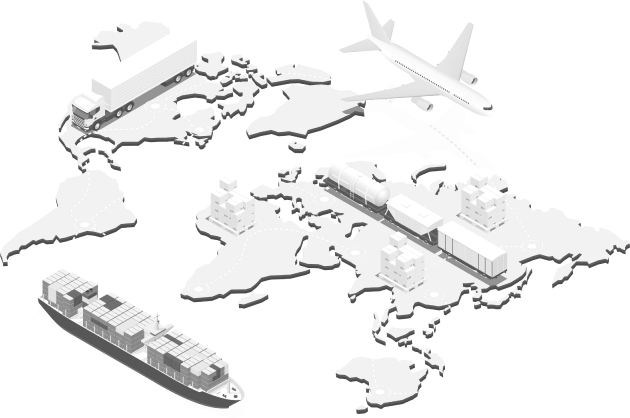The Perfect Solution For Transporting COVID-19 Vaccines
The main objective of a temperature-controlled logistics system is to ensure that sensitive products are kept at consistent temperatures throughout the entire shipping process, be it via ground, air, or sea – and every step in between.
In a globalized world, top-tier logistics service providers like Miami-based Prime Logistics have become a vital component of the modern-day supply chain mechanism. Transporting large quantities of perishable goods and medical products over great distances and diverse climatic conditions requires precise temperature recording and monitoring services.
Typically referred to as cool-chain or cold-chain logistics, this system involves the safe transportation of a wide variety of items such as fresh fish and produce, flowers, and medical goods such as vaccines and biologics. But highly sensitive chemicals, high-tech electrical and electronics equipment, and many other shipments are also on the list.
A Common Misconception About the Cool-Chain
Since it is called cool- or cold-chain logistics, people naturally confuse it with a system that is meant only to maintain low-temperatures. While it is true that the vast majority of products in this category require consistently cold conditions during transit and short-term storage, not all cool-chain cargo needs to be transported at near or sub-zero temperatures.
During winter months, for example, transporters need to keep some fruits and vegetables warm in order for them to maintain their best quality. Different types of product categories demand different types of temperature and ambient conditions. This is the reason why cold or cool-chain logistics is also called temperature-controlled logistics.
Following are some of the instances where cool-chain logistics is useful:
- Seafood and meat exports require “deep freeze” ambient conditions within the range of -28°C to -30°C.
- Most fruit and vegetables, and certain types of dairy products require ambient temperature to be maintained between 2°C and 4°C.
- Unless they are COVID vaccine requiring deep-freeze temperatures, many vaccines, biologics, and other pharmaceutical products require the temperature to be a bit higher, between 2°C and 8°C to be precise.
The average cool-chain logistics services maintain the ambient temperature between 12°C and 14°C. The typical products transported in such types of supply chains include fresh produce, processed food, and over-the-counter drugs.
A Specialized Provider for Cool Chain Logistics
Since transportation in a cool-chain logistics system involves maintaining a wide range of temperatures, it is imperative that specialized providers have the capability to deploy new techniques and technologies along with the basic know-how on putting it all together in the most optimal fashion.
Prime Logistics is one of the leading global players in the supply-chain logistics arena. In fact, the company has invested in vacuum cooling and pre-cooling technologies to further strengthen its fresh delivery supply chain. Very few enterprises can bear such a high capital cost of this type of equipment. But, the investment is paying off due to the sheer volume of merchandise they are handling, which justifies the expense. It even serves as a selling point in attracting customers looking to reap the benefits of longer shelf lives for their perishable products.
Rapid cooling is a crucial step in maintaining the integrity of the cool chain. The ultra-modern ColdMAX vacuum coolers that Prime Logistics utilizes can process 4,000 kg of material in each cycle; sensitive products like perishable fruit, vegetables, and flowers. Equipment such as the ColdMAX can help to ensure optimum temperatures are maintained throughout the entire transit process.
From an economical standpoint, and for efficiency’s sake, it is therefore highly important to choose a provider that utilizes the latest in available technology and possess the know-how in applying it on command. Providers with widespread delivery networks like the Prime Logistics not only ensure safe delivery by leveraging the latest technological innovation, but they also bring down delivery fee structures, which ultimately reduce overall cost.
Cool Chain Delivery Phases & Their Importance During a Pandemic
The importance of cool-chain delivery has increased in the current pandemic-stricken world. Several global leaders in pharmaceuticals, namely Pfizer, Moderna, Johnson & Johnson, and AstraZeneca have strict temperature requirements to maintain their integrity during transport. For instance, the Pfizer vaccine has to be maintained at ultra-cold temperatures between -70°C and -80°C, and can only be refrigerated for up to five days at point of delivery. Moderna’s vaccine remains stable in a standard refrigerator for 30 days and can also be kept in ordinary freezers for long-term use.
The executing authorities demanded that a distribution network be built consisting of ultra-cold freezers and mobile vaccination clinics. Such specialized logistics require a provider with the capacity and experience to carry out such a job.
A Detailed Guide
How should a cold-chain logistics provider prepare itself for such an uphill task? Prime Logistics offers a detailed outline regarding how the logistics providers and product distributors need to work together to meet the challenges – with a strategy involving synergistic coordination among different phases of the logistics chain:
Transport: Being a global leader in supply-chain logistics, Prime Logistics has well-established collaborations with some of the world’s largest and most reliable air cargo carriers. Combined with Prime Logistics’ time-tested expertise in managing ad-hoc cargo charter operations, it creates an ideal pre-emptive delivery network that can prioritize and expedite the delivery when and where it is needed the most.
Storage & Material Handling: The most crucial phase in the chain is when it comes to the delivery of vaccines. Prime Logistics is seeing this as a combined effort to improve cold storage, material handling, and warehousing facilities together. For a cool-chain logistics provider, the efficient management of this phase starts with the tracking and monitoring of the shipments. Prime Logistics, for example, has invested in world-class inventory management and product monitoring technologies.
Another key area that is under Prime Logistics’ focus is increasing the capacity of the temperature-controlled warehouses, especially for the ones that are at their key transit points. Warehouses in any supply-chain logistics system cannot run without adequate manpower. Therefore, it is required to deploy necessary manpower and services at the anticipated staging locations of the vaccine.
Packaging: Delivery of vaccines at hospitals, clinics, and other vaccination distribution points is the stage where packaging becomes highly important. The packaging should not only be resilient to normal wear, tear, and damages but should also be sophisticated enough to maintain the required atmospherics of the vaccine. For example, in the case of the Pfizer and Moderna vaccines, Prime Logistics is leveraging its experience of dealing with temperature-sensitive pharmaceuticals. It includes deploying government-approved procedures and trained staff at the locations of refrigerated warehouses throughout the network that will ensure the integrity of the last-mile delivery.
Information & Control: It is not a separate phase but something that invariably dictates the success rate of each of the phases above. To meet customer demand and the standards of service reliability, cool-chain logistics providers must always be ready to answer questions such as where is the delivery at present, when it will arrive at the location, and what could be the impacts of any delay. Prime Logistics has tackled these issues head on by increasing its global supply chain visibility and strengthening its system of receiving event-notifications on time.
To become more efficient in information monitoring and data tracking, Prime Logistics not only relies on its historical data, it also leverages the services of the global IT companies to redefine and digitize its operation. Companies involved in the supply chain logistics services of such emergency medical goods must use the latest technology available to enhance their efficiency, adaptability, readiness, and performance.
As a leader in this field, Prime Logistics is stepping well beyond traditional applications of information technology – especially to tackle the mammoth task of COVID-19 vaccine delivery. The company is exploring AI-powered augmented analytics to explore and analyze data. An efficiently analyzed dataset is of immense help when it comes to the effective running of the various operational procedures essential for on-time and safe delivery of refrigerated cargo from origin to destination.
Summary
Triggered by the pandemic, the global cold-chain logistics market is expected to witness significant growth in the years to come. Market research estimates suggest that the market may grow from the size of US$160 billion in 2018 to a size of US$585 billion in 2026.
To run a successful cool-chain logistics operation, a company needs to specialize in many aspects together. Like Prime Logistics, it would need robust carrier facilities across all modes of transportation including, air cargo, ocean freight, and roadway trucking. For one company, it might not be possible to excel in every area of transport but it certainly should establish reliable partnerships with third-party carrier companies in that case.
A provider of cool-chain logistics should understand the latest information management software well, and also be aware of the latest refrigeration, warehousing, and transportation technologies available in the market. It’s important to keep on reinventing the process and making it more efficient and cost-effective.
Lastly, the provider’s management and the staff absolutely must have experience in this field. They should have a clear understanding of which intervention points are critical in the chain and the possible areas where the process may go wrong. Deep and holistic knowledge about the stakeholders involved and being ready to respond to bottlenecks would make cool-chain logistics the most efficient supply chain in today’s world.
About Prime Logistics
Prime Logistics is a division of Prime Group, a Miami-based air cargo and international logistics conglomerate founded in Ecuador in 2001. With offices and refrigerated warehouses in Miami, Los Angels, New York, Quito, Bogota, and Amsterdam, Prime Logistics has hundreds of contacts and representatives around the globe skilled at providing expert logistics solutions. Myriad global industries are supported by our team in the shipping of commodities via air, land, and ocean – to virtually any location worldwide.
Friendly and knowledgeable customer-service and operations agents are available 24/7, by calling +1 305 592 2044 or via email at info@primelogisticsgroup.com. For information visit www.primelogisticsgrop.com.
Additional Readings:
Warming up to the Prospect of Surviving Disasters Along the Cold Supply Chain
Sizeable Benefits of Shipping by Ocean Freight
Prime Logistics Handling of Oversized Cargo is a Heavy Responsibility



